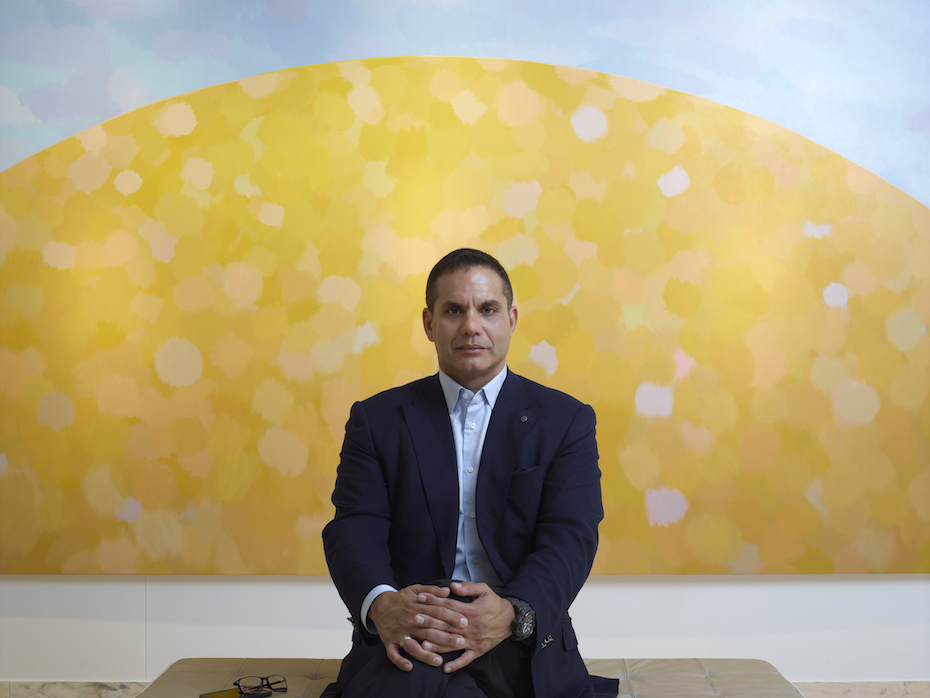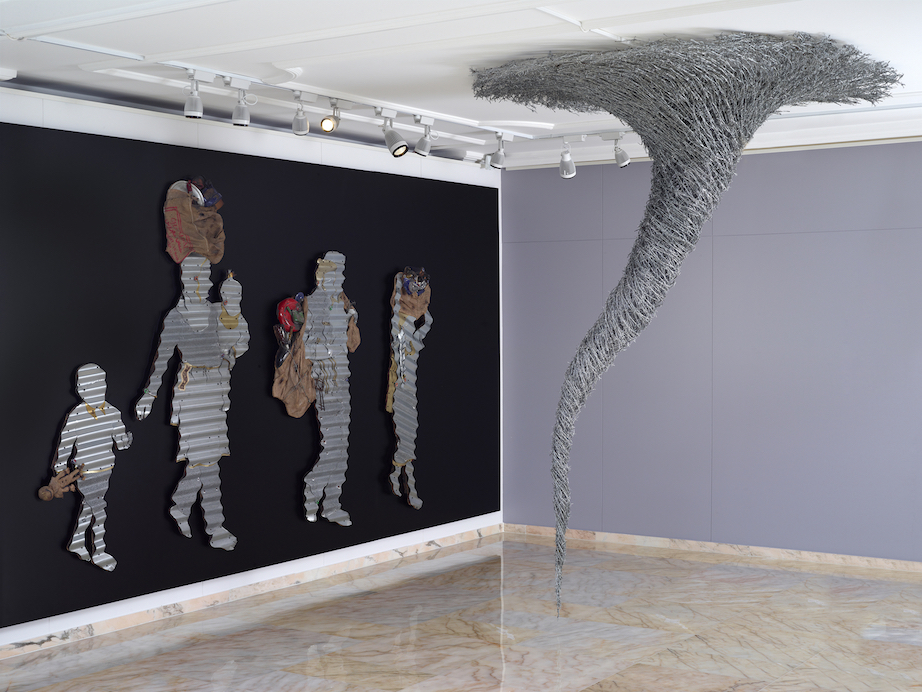BEIRUT: Since the outbreak of the COVID-19 pandemic, museums, galleries and art fairs around the world have launched sophisticated virtual tours, often paired with the hashtags #MuseumFromHome and #ClosedButOpen, to offer a much-needed path to calm, reflection and enlightenment.
Among those in the region who have stepped up online is the US-born Palestinian-Lebanese technologist and art collector, Basel Dalloul. Since 2017, Dalloul has managed, archived, and cataloged the huge collection of modern and contemporary Arab art amassed over decades by his parents, Ramzi and Saeda Dalloul, at the Dalloul Art Foundation (DAF) in Beirut.
“My father is an Arab nationalist,” Dalloul told Arab News. “Of course, that little experiment failed miserably, but he thought the one thing that really does unite Arabs is culture and language, and yet there are very few cultural outlets in the region that cover the entire Arab world.”
Boasting over 4,000 works of art, the family’s collection is a trove of work from the Arab world’s most revered artistic talents, from Lebanese masters Paul Guiragossian and Etel Adnan, Egyptian modernists Mahmoud Said, Effat Naghi, Ezekiel Baroukh, to Iraqi giants Dia Al Azzawi and Jewad Selim, in addition to emerging and established contemporary voices, including El Seed and Mounir Fatmi.
Dalloul and his team recently launched a website to publicize this seminal collection. And while Dalloul did not intend to launch the online platform in the midst of the crisis (they have been working on the site for three years), he said the time had arrived to reveal DAF to curious online viewers.

Ayman Baalbaki's 2014 painting 'The Middle East.' (Image courtesy of the Ramzi and Saeda Dalloul Art Foundation)
“When the coronavirus outbreak happened, all my friends called me telling me to get the website up,” Dalloul said. He adds that the site is averaging between 500 and 1,000 visitors daily. “So far, we have had visitors from more than 50 countries, so, clearly, there is a thirst for this type of thing. We have a massive amount of information on the artists in our collection, which we’ve been doing forensic research on. We have about 32 terabytes worth of data, which includes all sorts of media. My intention was to make all of that information accessible.”
The impressive collection began five decades ago, when Ramzi, an economist, and Basel’s late mother Saeda, an historian, befriended artists during their travels around the region. The couple started buying artworks, their selections driven by their shared taste in aesthetics and political views. In the eyes of the cultivated couple, according to Dalloul, artists mirrored the happenings of society, acting as “archivists of history.”
“Artists are the truthsayers of the world,” he said. “Throughout history, they depict what they see — it’s not a history that’s been rewritten or sweetened. In our part of the world, at least, it’s the brutal, ugly truth sometimes. My parents (bought) quite a few paintings of politically charged art.”
One of the highlights of the collection is a piece by contemporary artist Ayman Baalbaki, who drew inspiration from the Lebanese Civil War. In his mixed-media work on canvas, Baalbaki portrays a destroyed Middle East Airlines carrier — the result of Israel’s bombardment of Beirut in 1982. “The destruction of the Middle East Airlines is kind of synonymous with the destruction of the region,” said Dalloul.

'Remains of a Ravaged City' (2015) by Mahmoud Obaidi (Image courtesy of the Ramzi and Saeda Dalloul Art Foundation)
The Iraq War of 2003 is also boldly depicted in some of the collection’s works, including Baghdad-born Mahmoud Obaidi’s aptly titled “Remains of a Ravaged City,” in which bodies roam in a state of decay and loss. Abdulrahman Katanani — born in a refugee camp in Lebanon — contributes a visually striking sculpture called “Tornado,” composed of barbed wire, reminding the onlooker of the Palestinians’ plight.
Not all of the work is focused on violence, of course. The collection is home to 20 geometric abstract works — created from the 1960s onwards — by New York-based Palestinian painter Samia Halaby. A highlight is her 2014 painting “Jerusalem, My Home,” commissioned by Dalloul’s father. Halaby represents the Dome of the Rock’s shining gold through patches of light, warm colors.
The collection also includes an elegant portrait from 1914 of New York intellectual and artist Marjorie Morten — the first painting completed in the US by Kahlil Gibran, best known as the author of “The Prophet.” Dalloul told Arab News that his father actually outbid Mexican billionaire Carlos Slim — who reportedly owns the world’s largest collection of Gibran’s paintings — at auction to buy the work.

Kahlil Gibran's 'Portrait of Mrs. Alexander Morten' from 1914. (Image courtesy of the Ramzi and Saeda Dalloul Art Foundation)
“Our mission is not only to appeal to the academics, but to the general public,” Dalloul said. “In my mind, if you want to want to appeal to the general public, you’ve got to tell them an interesting story.”
Needless to say, every artwork in this rich reservoir has a story to tell.








0 التعليقات:
إرسال تعليق